#lady lucifera
Explore tagged Tumblr posts
Text
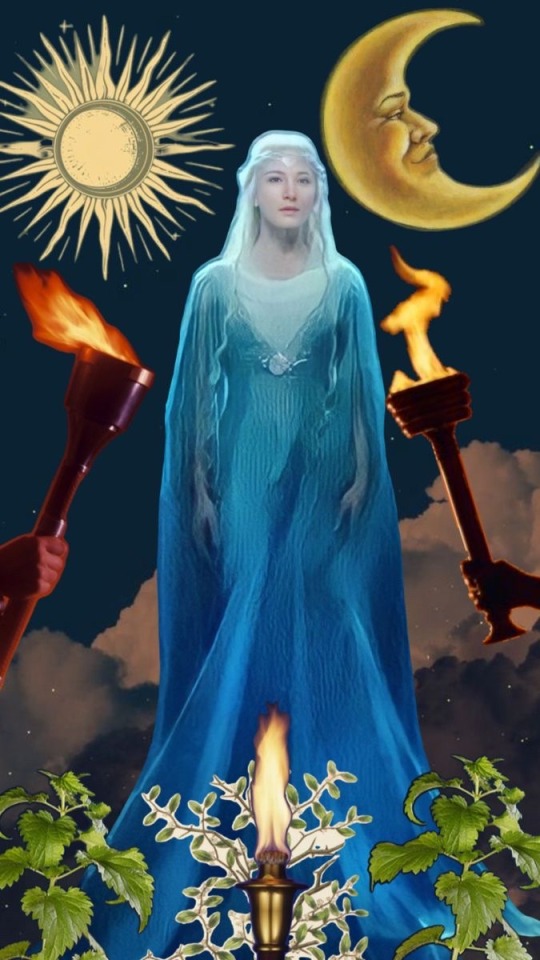
Roman Goddess Luciana of Childbirth and Light
Attributes:
Childbirth
Matrons (Married Women)
New borns
Midwifery
Soon - to - be Mothers
Virginity/Chasity
Celestial Light Moon and Sun
Light that which brings Newborns into life.
Fertility especially when it comes to women
Symbols:
Torches
The colors red, black, and white
Libyan Lotus trees or Nettle trees. Member of the Elm tree family. The trees are southern European species of nettle trees, the Romans just refer them to as Lotus trees.
I’ve read from a source that lady bugs or lady birds are sacred to her but I find just one source so take it with a gain of salt. Lady bugs is mostly associated with Freyja so I would imagine relating to fertility.
Titles and Epithets:
Luciana is the Goddess of light and childbirth and newborns. Her name is alone to be just be a goddess alone which is possibly she originated from a Sabine moon goddess. But her name itself can be a title like how “Hekate or Hekatos” is used not just for a name of a goddess. Her name Luciana can be derived from the Latin word “Lux” which is luminous and light also “Lucus” which means Groves I’ll explain in the next paragraph. I’ll put other names she was referred by but also what goddesses of which they took her name as an epithet/title.
- Noctiluca - Giving Light by Night
- Luna - Of The Moonlight
- Lucifera - Giver of Light
- Juno Lucina - Shining one. With this title there is more information about the worship of Luciana.
- Diana Lucina - Divine Queen
- Hekate Lucina - Hekate was also known to bear this title as a light bearer.
- Saint Lucia or Saint Lucy: It is theorised and not so uncommon of when goddesses or gods become saints after Christianisation a well known example is St Brigid once known before in pre-Christian Ireland as a Celtic goddess of the Hearth. Saint Lucia is said to be the Goddess of Luciana whose symbol is a torch as well.
General Information
During the early days of the Roman Empire Luciana was one of the first temples to be established. She is said to be originated from the tribe of Sabine whose role as a moon goddess. Her role within Roman religion was mostly documented as Juno Lucina which isn’t surprising since Juno is the goddess of marriage and motherhood and childbirth. Her temple was set on Cisipan Hill on a Grove. But a shrine to Luciana was built on Esquiline Hill around 373 BCE on March 1st. It was always set on a grove which was surrounded by Lotus trees or Nettle trees which was very sacred and celebrated by offering locks of hair from Vestal Virgins who acknowledge their vows of chastity and a choice to not become a mother.
When Luciana was invoked during childbirth for easy delivery and a healthy child to be born. Women would let their hair loose and untie any knots from their clothing in a way of sympathetic magic letting energy of the birth flow easily and without any complications. After the baby was delivered, the child would be brought to the goddess’s altar called Sellisternium (a altar dedicated to a goddess) along for a feast of celebration. Luciana is very much centered around all things pregnancy, newborns, fertility, she even is called a Saviour from infertility, She is in charge bringing Newborns into the light of the world, also grants Newborns safe passage.
Her festivals
Held on March 1st, the Roman new year also called Matronalia plus the anniversary of the temple’s founding. Where married women would be given money from their husbands to make an offering to Juno Luciana of Womanhood. They (Matrons) would general go to the temple make offerings on Esquiline Hill. Afterwards a festival of Family would began as the Matrons of the household would be a central figure with their husbands giving them gifts and Slaves would be served as well.
Editor’s Note:
It was brought up very importantly that Luciana is the Italian proper name but “Lucina” is the correct and proper spelling for the titles and epithets for Juno and Diana not Luciana. The difference is very hard to notice at first which I made that mistake, but thank you to the lovely user who made it known to me in the comments! Putting this here so that it’s a marking of update, I will retype the titles and such for the correction 💖
#hellenic polytheism#paganism#hellenic pagan#italian traditions#italian folk magic#roman paganism#roman goddess#helpol#hellenic community#witchcraft
21 notes
·
View notes
Note
Hy there!
I just read jagged hiccupfound and I was looking for more fics with fated mates!
Hi Anon:
Below are some soul mate fics. We also have a large library under our Soulmate tag, which is where we'd put something like fated mates. These fics focus on them being bonded together, not necessarily in the same vein as Jagged - Haus
Our Magic Knows No Bounds by PinkGlitterMasturbation
E | complete | 350k
Narcissa Malfoy is done with crazy, and she is determined to fix the mess her life has become. She has brains, a plan, and more than one dark spell to help her. But before she can put her plan into motion, she discovers a shocking secret about Hermione Granger, one that the girl doesn't even realize about herself. Before Hermione knows it, Narcissa has cursed them both, sending them back in time to deal with the Dark Lord in the form of the child Tom Riddle. Of course, Tom is no ordinary child, and time doesn't take kindly to being rewritten, so this will be a bumpy ride full of awesome, magical women, pragmatic decisions, and, rest assured, dear readers, plenty of sex eventually! *Winner for Best Story in the Rare Pair Category in the Beyond the Book Fanfiction Nook Summer 2018 Award!*
Uxor Lucifera by LittleMulattoKitten
E | WIP | 21k
“Listen, mate,” she started. “I don’t know who the fuck you are, or how the fuck you got into my flat, but you’ve got about two seconds to make your way through that door-” she pointed at the door she’d just entered through “-before I call the cops. After dealing with my cunt of a boss and Cormac and his creepy arsehole friends, I’ve had just about enough bullshite for one night, thanks. He’s being carted off to the hospital hopefully, go rob him.” Tomione. Smut. Demon Mate AU.
Shared Flame by Lady Miya
M | complete | 311k
It all started when two normally clever individuals both had a really lousy day.
The Black Veil by Nerys
M | Complete | 13k
Samhain: When the veil's at its thinnest, the impossible will occur. Up is down, down is up. Everything can be achieved by those the Goddess values.
11 notes
·
View notes
Text
asoiaf brainrot is trying to link ashara and howland through the moat cailin : the name cailin can be linked for some to the goddess diana, ashereh/diana = fertility goddess, diana during the trojan war putting a deer/stag instead of iphigenia, one of diana's titles is diana lucifera (light-bearer)/ martemis phosphorus, phosphorus (morning star)=/hesperus (evening star) -> arthur/brienne, phosphorus=Eosphorus (dawn bringer),"I swore an oath to keep him safe," she said to Rhaegar's shade. "I swore a holy oath.""We all swore oaths," said Ser Arthur Dayne, so sadly." We = arthur (every after his knighthood)and brienne (lady stoneheart) on jaime
everything comes back to arthur is brienne and brienne is arthur

#asoiaf meta#asoiaf#ashara dayne#brienne of tarth#arthur dayne#jaime lannister#arthur x jaime#jaime x brienne
10 notes
·
View notes
Text
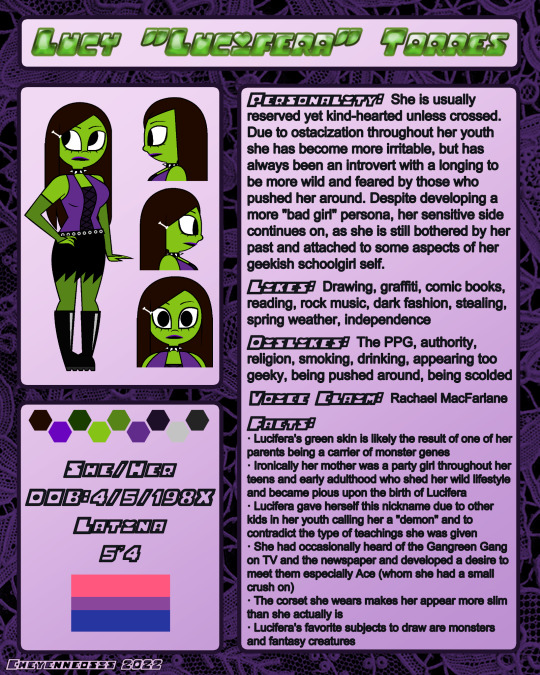
lalalala 4 month old reference piece thingy of one of my ppg ocs, Lucifera ! for some funny reason i've become deeply invested in her and my other oc's design/bio so theyre um 3 years in development at this point but if you've seen the older images of her well now theyre outdated as she's had a slight redesign :9 still changing things up but read more for a shortened bio !
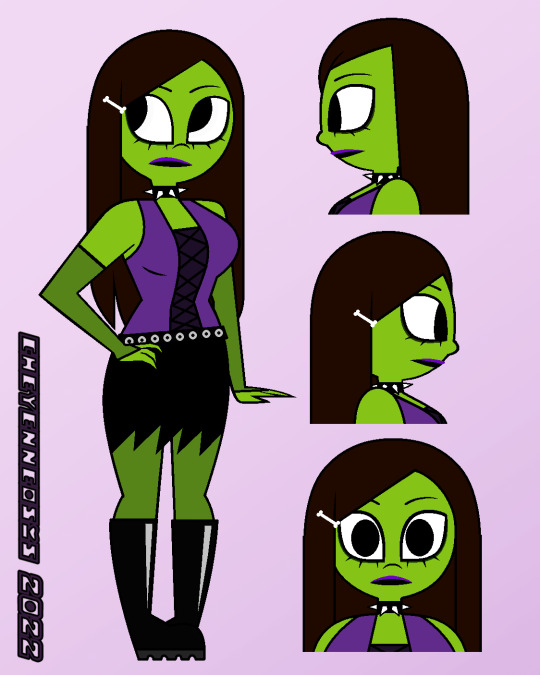
Lucifera was born with naturally green skin to a party animal lady turned god fearing woman (she thought she was being "punished" for her ways) she attended a religious school for a while but that didn't go so well and the school eventually just kicked her out due to being a "distraction" (families + staff complaints, other children's teasings of her being disruptive) she got shit for merely existing and had teachings shoved down her throat and became more sympathetic towards the rising evil in Townsville in her teens from everything and would occasionally fantasize about becoming a Gangreen Gang member or at the very least some sort of villain...after getting expelled for getting into a violent fight at school her mother was about to send her off to a boarding school but Lucifera decided to change her looks (finally got out the gothy clothes she bought long before but feared wearing around her mom) then ran away that night and lived on her own for a bit. eventually she'd run into the Gangreen Gang after witnessing them rob a gas station which initially got her in trouble with them until she helped hide them from the Powerpuff Girls. They all then stuck together but ofc got confronted by the puffs every now and then. Another gal would eventually join (Serpentine) and other lovely things would take place, but Luci wouldn't always have things great after all this...more info TBA!
#u may be thinking huh born in 198X right#well#if you couldn't tell by now im a mega sloppy toppy sucker for 00s things so shes a teen in 200X#i headcannon the show taking place around 2001 or 02 but my autistic little brain wants to be like erm no 98 or 99#but again 00s freak and why trust cartoons to stick to real life passage of time so :')#ppg#powepuff girls#the powerpuff girls#gangreen gang#oc#original character#fan character#2000s#90s#cartoon#my posts#my art#ok to reblog
14 notes
·
View notes
Text

@hellenic-reconstructionism I deeply apologize for the late response but I would be glad to answer your question about the others epithets! :D
But first a bit of backstory. When I first began my journey as a Hellenic pagan, I checked out @screeching-0wl 's Hellenic cheat sheets (still sometimes do) and that's where I got the epithets.
I wrote down the epithets they had for lady Selene on their cheat sheet and saved it to my drafts and wrote them down in my Hellenic journal. I remembered them a few days ago and I decided to post them since it was Monday.
But I did do my own research on the epithets!Keep in mind that these are all of the things that I have managed to find about the epithets and I have primarily used Theoi.com (great website btw! I highly recommend it) to find all of the information there is on lady Selene's epithets. So if any other worshipper of Selene or someone who has studied her has more information please let me know!
But with that, let's get on to the epithets!
So, for the epithet "Eilethyia" (greek spelling Ειλειθυια), Selene was worshipped as a childbirth goddess in late antiquity. But I also think it came from her being identified with Artemis, who is also a goddess of childbirth.
These are the only sources I found that can back that up.
Scholiast on Homer's Iliad (trans. Campbell, Vol. Greek Lyric I Alcaeus Fragment 390) (Greek scholia B.C.) :
"Chrysippus in his Old Physics [C3rd B.C.], shows that Artemis is Selene (the Moon) and credits it with an influence on childbirth, says that at the full moon not only do women have the easiest labour but all animals have an easy birth."
Cicero, De Natura Deorum 2. 27 (trans. Rackham) (Roman rhetorician C1st B.C.) :
"The name Apollo is Greek; they say that he is the Sun, and Diana [Artemis] they identify with the Moon . . . the name Luna is derived from lucere 'to shine'; for it is the same word as Lucina [Eileithyia], and therefore in our country Juno Lucina is invoked in childbirth, as is Diana in her manifestation as Lucifera (the Light-Bringer) among the Greeks. She is also called Diana Omnivaga (wide-wandering), not from her hunting, but because she is counted as one of the seven planets or ‘wanderers’ (vagary). She was called Diana because she made a sort of Day (Dia) in the night-time. She is invoked to assist at the birth of children, because the period of gestation is either occasionally seven, or more usually nine, lunar revolutions, and these are called menses (months), because they cover measured (mensa) spaces."
Tanysipteros (τανυσίπτερος) is found in the Homeric Hymn 32 to Selene, and that's the only source that I found where that epithet is used.
Now boōpis (Greek spelling βοοπις) was a bit more tricky to find, but I did manage to find a source.
Anonymous (perhaps Pamprepius of Panopolis), Two Poems Fragments (trans. Page, Vol. Select Papyri III, No. 140) (Greek poetry C4th A.D.) :
"The dog-star [Seirios (Sirius)] is extinguished by the watery snowstorms. For even the stars go pale before their streams, no longer do we see the Moon (mênê) [Selene], the dark-eyed lady (potnia kyanôpis) that treads upon the heel of the sun, who is frozen among the clouds ((lacuna)) . . no longer did the redness of the dawn embrace the circle of the night . . . The glow of the ox-eyed moon (boôpis selênê)."
I also think it comes from her association with bulls and oxen. Ampelos compares himself to her when he's riding a wild bull because he's also horned and riding a bull like Selene, the orphic hymn 9 to Selene also refers to her as bull-horned.
Unfortunately I couldn't find the sources for doloéis, lampētes and ennychios. But like I said in the beginning of this post, if anyone has more information on those three epithets and knows where they're from please let me know!
🌙Epithets of Lady Selene🌙
Selene Dolóeis- Subtle One
Selene Boōpis- Cow-eyed
Selene Lampetēs- Lustrous One
Selene Ennychios- Nighty
Selene Pasiphae- All-Shining
Selene Eilethyia- Aiding In Childbirth
Selene Aiglè- Gleam
Selene Tanysipteros- Long-Winged
#reblogging#again i deeply apologize for not answering sooner#goddess selene#selene deity#selene goddess#selene#lady selene#selene posting#epiphets
60 notes
·
View notes
Text
[Creation of my own Wiccan Tradition]
THOUGHTS - PERSONAL MYTHOLOGY
Erikapaios (Orphic God, the Lord, Lucifer) & Nyx ( The Lady Night ) ''give birth'' by Spirit (Blue Fire) to/ or incarnate as - Eros and Tanathos (Divine Twins of Feri) & to all divinities (of Hellenistic Polytheism), including the Witch Mothers (Circé, Hecate, Nyx, Séléné, Medea ~ traditional witchcraft). This Wicca is duotheist (of course) and very Polytheistic.
The Gods are also the Divine Twins, (Feri Tradition) Pillars of the Wild (The World described in Strix Craft) & the Civilised (Helpol), Artémis & Apollo, The Dioscuri..but also the Red and the Green Man of Blue Rose Feri: Pan & Dionysos. Gender is fluid.
The Blue God is Eros. Arddhu is Tanathos.
Quacoralina is Nyx.
Lucifer, the God, is Erikapaios/ Phanes. (Luciferianism), but also Apollo and Helios. He's may be Abraxas.
Lucifera is also Hekate, Séléné, or Hestia (fundation of the cult amongst human).
Being Luciferians, these Gods remains separate individuals: Hekate is not Nyx, Helios is not Erikapaios. Hestia is not Hecate !!
The goddess of the Esbat is Selene. Hecate is honored by the Deipnon. Dionysos, Aphrodite and Pan, Hermès, Apollon, the Kharites, are important, with Artémis (1st Goddess who visited Gaul) ( Zeus, Asclépios, Hadès ,etc) Primal Gods, Titans and Olympians are worshipped. Heroes too.
The Wheel of the Year is informed by Strix Craft. The calendar incluses also famous greek festivals. There is a myth close to Traditionnal Gardnerian Wicca but only as a formula of invitation of the Goddess and the God: the ''Sabbats''honor individual Gods (Hestia : february the first, etc)
There are other festivals for the Theoi and the Witches.
The Queen of Witches is Circé who also represent ontological anarchy (Chaos, Hakim Bey), the Black Heart of Innocence.
She's the (spiritual) daughter of Hekate & She's a Goddess.Witchcraft is informed by the Land spirits and french folklore can be invited as long as it stays under the patronage of Hecate, the Queen Circé, (to be continued) Hecate bears the Witch Fire and Kirke is the one I chose to transmit it. Some special Tools.
The Divine Initiate is Antinous (the Blue Lotus)
There are 3 types of Ancestors.
This Wicca is dynamic equilibrium between duotheism and polytheism in my own tradition. It names Orphic Gods but isn't initiatory and accessible to all. It's not ''Orphic''. It is the Wiccan Twin of Strix Craft. It is Luciferian.
Respect to Traditionnal Wicca: • Circle: insist, but all spells do not fit well with a Circle casting (powder-spells, etc) • 4 Guardians: _______• Elemental workings • Tools •
Death - Hermes Psychopompe > the Garden of Persephone.
There are 3 souls, 3 Worlds, et 4 main categories of Divinities and spirits : Red, White, Glas, Black. The Witch Can work with many spirits (Médusa, Helios, etc) : this Wicca is deeply informed by Feri, but is not Feri.
This Wicca has 4 focus: Relationship (The Gods and the Self) , Nature (spirits) , Witchcraft and Community (Wicca, Helpol, Witches, Strix Craft)The Goddess Can manifest by the Pentacle of Iron, The God by the Pearl Pentacle (or the other way) etc
Values: to be continued. No Threefold Law.
To be continued.
That's all, folks!
#diary#journal#january 2024#new year 2024#Gamelion 2024#wicca#feri tradition#syncretism#strix craft#lucifer#luciferism#luciferianism#religion#paganism#thoughts
0 notes
Text

Black Madonna, Mother of Light and Dark, Star Goddess, Lady Lucifera, Shine your divine light upon us, illuminate our Darkness, alchemize our pain and sorrow, may we transform into strength and beauty, may we live in harmony with ourselves and the world, grounded and rooted.
20 notes
·
View notes
Text
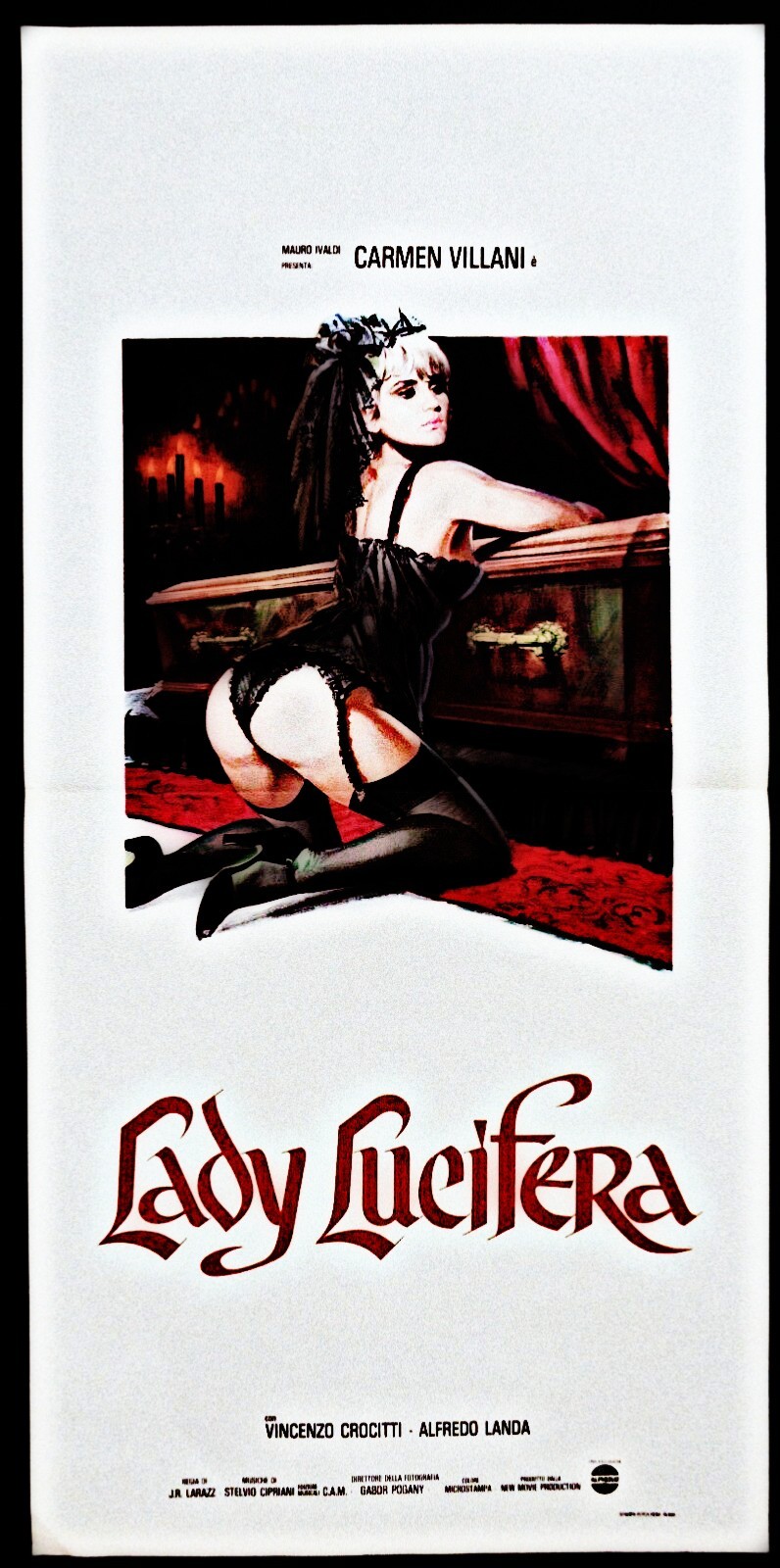

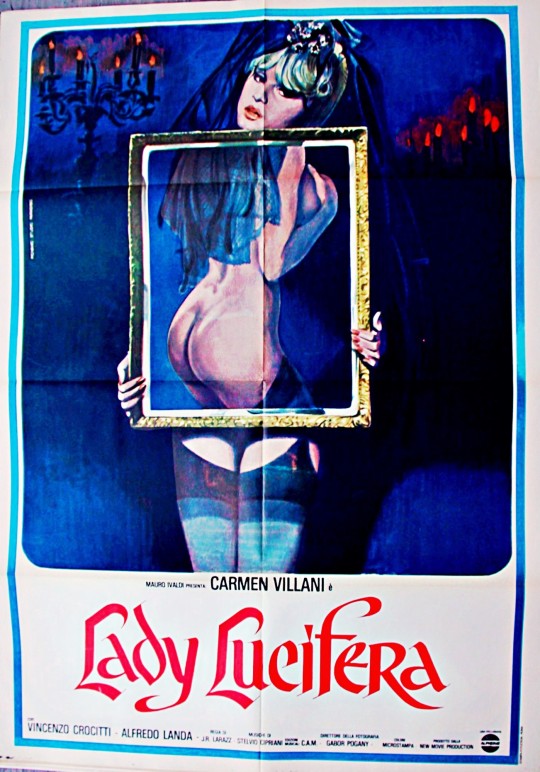
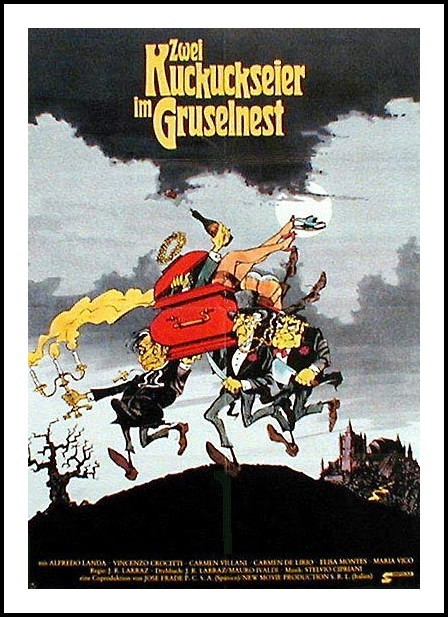

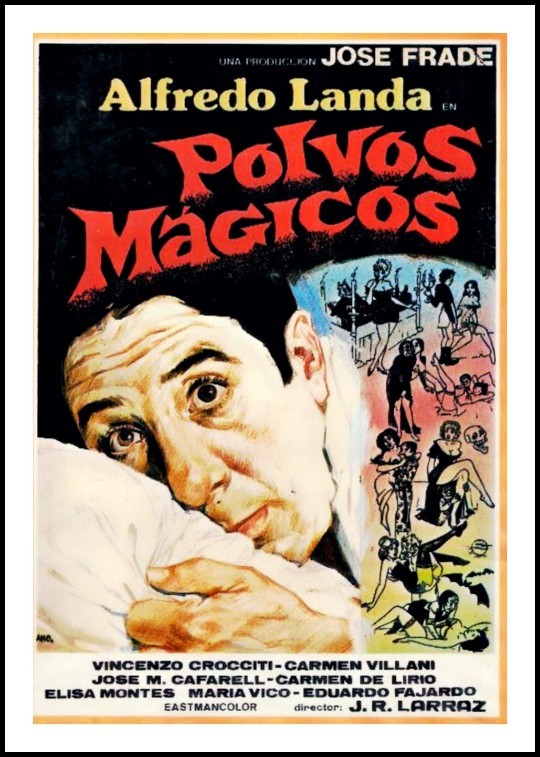
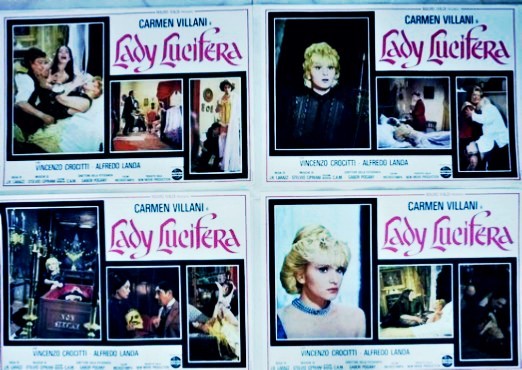


A Rete Italiana/Spanish HORROR/COMEDY with the Italian Sexy_Star Carmen Villani
1979
Lady Lucifera
Also Known As (AKA)
(original title) Polvos mágicos
Italy Lady Lucifera
West Germany Zwei Kuckuckseier im Gruselnest
Release Dates
Spain 26 October 1979
West Germany 5 August 1983
Directed by José Ramón Larraz
Music by Stelvio Cipriani
Writing Credits
Mauro Ivaldi ... (screenplay) &
José Ramón Larraz ... (screenplay)
technical specifications
Runtime 1 hr 28 min (88 min)
Interpreti e personaggi
Carmen Villani: Lady Lucifera
Alfredo Landa: Alberto
Vincenzo Crocitti: Paolo
Eduardo Fajardo: maggiordomo
Maria Vico: Zulema
Elisa Montés: Alberta
Assumpta Serna: Carlotta
Carmen De Lirio: contessa
José María Caffarel: conte
Carlos Lucena: sacerdote
Trini Alonso: Anna
José Nieto: giudice
#lady lucifera#polvos magicos#carmen villani#alfredo landa#mauro ivaldi#horror comedy#comedy horror#commedia horror#giallo comedy#giallo all’italiana#giallo fever#gialli#giallo#italian giallo#giallo italiano#giallo all'italiana#horror#horror film#film horror#film orrore#italian horror#spaghetti horror#vincenzo crocitti#jose ramon larraz
27 notes
·
View notes
Text




#rosalbaneri one of the most underrated queens of grindhouse and exploitation throughout the 60’s and 70’s. One of my favorites is #ladyfrankenstein #1971 She was also brilliant in #99women One film that’s rather obscure that I’d love to get ahold of is Lucifera: Demon Lover, which is described as being pretty hallucinogenic.
42 notes
·
View notes
Photo

Lucifera by Alex Horley
#Alex Horley#art#Illustration#artwork#Lucifera#devil#evil#cemetery#painting#lady#sexy#gothic#satan#goth
297 notes
·
View notes
Text
I’ve written like...3/4 of the next chapter of The Lady.
Maybe 1/3 of the next chapter of Uxor Lucifera.
1/2 the next chapter of His Little Star.
A lot of rewrites and edits and planning done on the novel thing.
Am I a fanfic author again yet?
#fanfics#The Lady#Kyla talks#I should be in bed#I work in 6 hours#Oh well#Tomione#Uxor Lucifera#His Little Star#Lucifer
9 notes
·
View notes
Note
hi! could you do diana? and if you can, could you please tell me how to start worshipping, i'm a new witch and im really lost
Offerings and ways of Worshipping Lady Diana
(In mt experience the best way to begin worshipping a deity is to first establish communication, this can be through throwing together a quick pendulum board and using a paper clip on a bit of string or using a tarot app (I recommend golden thread tarot) if you don't own a deck of your own. Establishing contact is an important first step, it can tell you why the deity is there and give you an insight into what they may be seeking from you in return. (I suggest biddy tarot for card meanings. Next what you'll wanna do is create a devotional space for them, this can be anywhere, outside, a desk, a bedside table, in a small box, wherever you can fit one. This space will be where you put offerings, candles and incense. (Of its in a box use electric candles or remove the candle from the box when you light it. Once you've made an offering commune with them Once more, see if they liked it (I do this through pyromancy but other divination works just as well), find out your deities sacred day(s), or honestly whenever you have free time and use that time to set offerings (I do mine weekly or whenever feels necessary.) Proceed as feels correct (or ask for help from fellow practitioners)
Incorporate elements of worship for Latona and Apollo into your practice with Lady Diana, in ancient Rome she was most commonly worshipped alongside her brother and mother
Aid pregnant people and animals however you can
Study midwifery
If you hunt, do so ethically
Diana is the goddess of the wild, children, providence, abundance, harvest woodlands, the hunt, fertility and domestic animals, and in Italy, the sun but she became associated with the Moon when people equated her with Artemis (and later, Selene, Luna and Hekate) so anything moon shaped would be an acceptable offering for her
Moon cakes
Sun or moon water
Items found in the forest, this can be leaves, flowers, sticks, rocks or even interesting trinkets you may find
Leave (decomposable) offerings by a lake or body of water
Bow and arrow imagery
Practice archery or knife throwing
Arrowheads
Things in threes (Diana was sometimes called Threefold Diana Trivia, this was one of her earliest Epithet)
Learn about her epithets, such as Trivia, Diana Lucifera, Diana Triformis, Diana Tifatina and Diana Nemorensis
associated scents for candles and incense: jasmine, frankincense, lemon, aloe, ginseng, verbena, camphor, rose and sandalwood
associated plants: apple, rue, balm, beech, vervain, jasmine, mugwort, lavender, walnuts, willow, Oak, aloe, cedar, tarragon, wormwood, lemon, anemones, flowering almond, Hazel, ranunculus, honeysuckle, passionflower, thistle, laurel, fir tree
associated gems and metals: amethyst, emerald, moonstone, pearl, quartz, crystal, silver, turquoise, iron, aluminium, moss agate and diamond
Associated animals: Dogs, deer, goats!, guinea fowl, horses, bear, dove, and bees
Dog teeth (ethically sourced)
Dog fur (ethically sourced)
Honey
Deer antler (ethically sourced)
Goat horns (ethically sourced)
Candles of silver, white, red, purple, green and turquoise
Celebrate August 13th (Diana was worshiped at a festival called Nemoralia, or the Festival of Torches, beginning on August 13 each year. After washing their hair and dressing it with flowers, Diana’s followers would proceed around the sacred Lake Nemi) and 15th (her feast day, now the Catholic day of Mary's assumption into heaven)
A statue of her! Or her two dogs
Just spend time outside under the sky (Diana's name derives from the word sky/daybreak)
Fresh fruit (particularly apples)
A mirror or mirrors on her altar or shrine
Bread
Clay figurines
Foster dogs
Feed stray dogs
Leave dog biscuits and meat offerings for her hounds
You can also refer to my posts or other sources about the worship of Lady Artemis from the Greek Pantheon if you need more inspiration for worship and offering ideas but keep in mind they are different deities
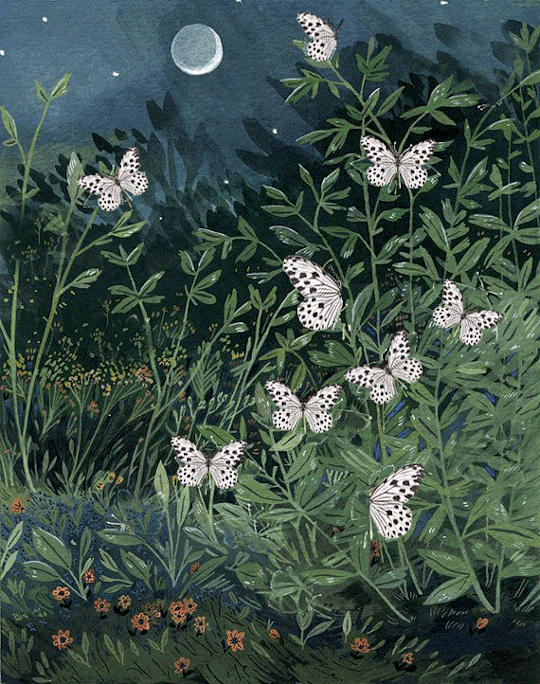
#pagan#paganism#omnist#omnism#deity#deity worship#paganblr#witch#witch community#witch blog#witchblr#diana#diana deity#roman deities#roman mythology#deity devotion#deity work
150 notes
·
View notes
Text
not to bring up my ashera is alive/nod to diana especially lucifera but i thought of jaime's dream in jaime vi but leaving harrenhal leads him to see 2 of his old paths before he falls asleep on the weirwood tree stump and he just ends up in his own hell but like on of the epithets of diana is trivia where she is with hecate and selene and the three of them are goddess of the underworld by as much as of the crossroads. the three of them are often represented with torches in their hands. Just like Cersei "Her torch was the only light in the cavern. Her torch was the only light in the world." before jaime and brienne got their own with their flaming swords. so three paths but cersei leaves him, and his own dies soon after. so his dream seems to tell him that only brienne's path seems to be the correct one. but like did jaime "It was not him, he thought. It was never him." understood that his dream was not his own. why arthur replied "so sadly" to brienne specifically when she was talking to rhaegar why arthur is always described as sad in both ned and jaime vision kinda a warning dream to brienne and jaime over their oaths, warned about lady stoneheart ???? grrm give me twow pls

4 notes
·
View notes
Note
i read up on the etymologies for apollo and art's names! so "apollon" apparently means 'destroyer', but placed w'in the context of destroying evil; w art, etymology either comes from the word for 'butcher'/'protector', the difference between the two being one letter, which was interesting. mentioning this as you said something earlier of the twins' destructive natures being discussed less, & after certain versions of the orion & coronis myths. killing each other's lovers in a jealous rage? sEXY
as promised, here i am with the second part of your ask!
indeed your research was quite correct, apollo and artemis’ names have various possible etymologies and therefore meanings - and not innocent ones.
the most famous, and probably the most intriguing, translation of apollon is from the verb απολλυμι, which as you say means “to destroy”, but it’s a common, “modern” misconception to think it had a benign meaning, while it wasn’t really (or anyway only) the case. yes, apollo was one of the most important and worshipped gods of the whole greek pantheon, but he was also one of the most ruthless and therefore feared. apollo destroyed his people’s enemies, but was ready to let his fury unleash upon his very devotees. the scorching light that burned through him cast also impenetrable shadows upon the whole world. it’s funny to think that each and every possible etymology of his name bear the same terrible double connotation, both light and darkness: it was theorized that the name apollon could also come from the noun απειλε‘, which means “promise” but also “threat”; and again from ἀπέλλω, which means “to deliver” but also “to confront with ruthlessness”; from the indoeuropean root -apelo, which means “force”, both in a good and in an evil way; or from απολουσιs, which means “purification” and not simply in a painless way.
as you can see, apollo was far from a docile deity, no matter how rational and orderly his domains. he had a rather dionysian, disturbing side. for example, he was also widely associated with butchering and sacrificial blades (on this topic there’s a great book by marcel detienne, apollon le couteau à la main - apollo with the knife in hand).
i also find particularly interesting one of the less commonly known interpretations of his name, which could simply mean “apple”. this version is wildly suggestive in its simplicity, it immediately reminds of both the apple of discord and the apple of the original sin: the serpent was one of the principal animals sacred to him, one of his very symbols - it immediately makes you think at apollo’s obvious eventual association with lucifer’s figure from the christian times onward (one of apollo’s epithets was Φωσφόρος, “the light bringer”/”the morning star”, also used by the romans in its latin translation, lucifero).
as for artemis, things are more complicated. artemis has always been a mercurial goddess, not easy to analyze or define, especially because she has most definitely pre-greek origins. she’s one of the few deities whose name is certainly identified in cnosso’s linear b. her name can mean both “maiden” and “lady/untouchable/strong” (fortifying her original minoan association with the potnia theoron, the lady of wild beasts and with kore/persephone, the cretan lady of the labyrinth), but her name can also mean “butcher”, as her brother, or can come from the indoeropean root -ar (the best), which in many many languages identifies the meaning of “honorable, best, bright”. it’s also of notice, in both greek and roman mythology, she shared the same “light bringer” epithet of apollo (in rome they were apollo lucifero and diana lucifera).
it’s fun to know (speaking of fierceness!) some scholars associate her name to bears and war and claim king arthur’s name is an open derivation and tribute to hers!
we can safely deduce from all these historical linguistics that we are not dealing with sheeps, but with wolves (and literally! wolves were sacred to them both and wolf-like was the form their mother leto took while pregnant to escape hera’s wrath).
we can also safely say no one ever came out alive from their myths.
#greek mythology#apollo#artemis#artemis and apollo#mythology#lucifer#christian mythology#swans and claws#anon#one and one thousand stories lis told#asks/replies
290 notes
·
View notes
Link
This is the Lady Lucifera gallery displaying creative boudoir photography. Click here to view the gallery and please don't forget to share.
3 notes
·
View notes
Text
For one of my classes I’m doing a project on how Lady Jane Grey and Lucifera from The Faerie Queene can be compared to each other. Now, I’ve always enjoyed studying Tudor history, but revisiting Jane’s story and actually going into detail about it makes me super sad 😢
#Mads makes a text#history#the tudors#jane grey#lady jane grey#I don’t remember if I have tagged or not but anyways#like her final year of life = tragedy
7 notes
·
View notes